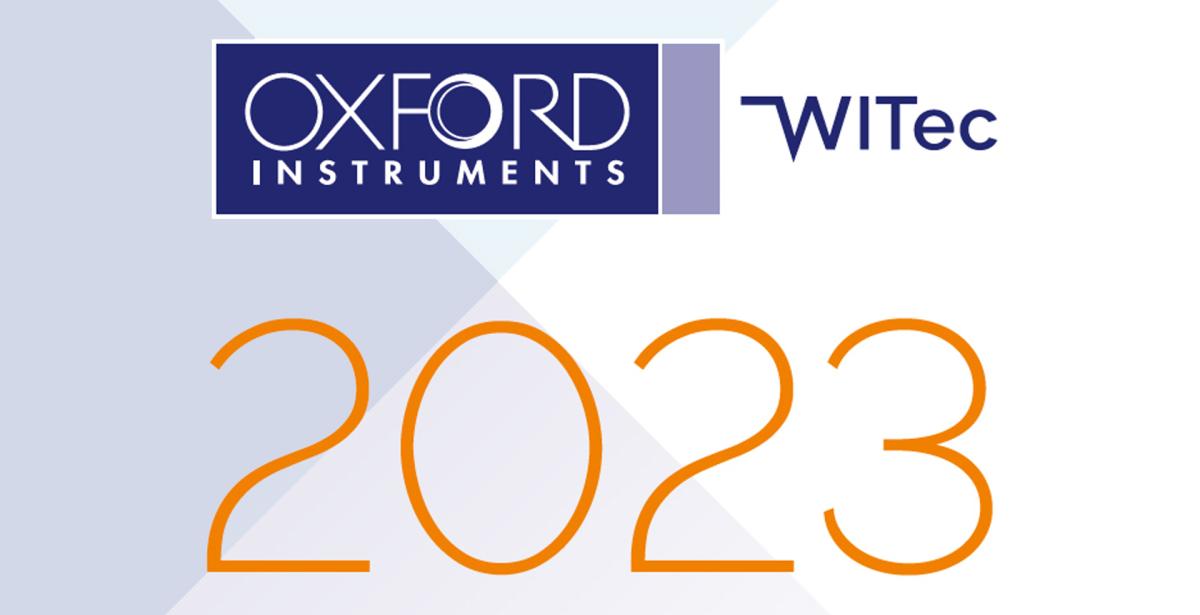Dec. 22, 2023
2023 in Review: Raman on the Move

There’s much to reflect on as 2023 draws to a close: our growing teams, successful 19th Confocal Raman Imaging Symposium, recognition of the WITec Paper Award winners and much more. Here, however, we’ll focus on the news at the very core of WITec’s character – technological innovation – and more specifically, our three most recent product launches.
This was the year that Raman microscopy leapt from its established stage to share space with other methods, explore outside the laboratory, and handle some of technology’s biggest and most vital samples. The modularity of WITec’s products made it possible, and our drive to address the immediate requirements of the scientific community made it happen.
Suite SIX – March 16
In spring we introduced our latest data acquisition and post-processing software. Suite SIX gives alpha300 microscopes multiple user profile options, support for regulatory compliance efforts and the TrueOrigin advanced sample navigation tool.
TrueOrigin is a portable coordinate system that uses markers on a sample holder or features on the sample itself to note the location of measurements. Users can remove a sample from the stage of an alpha300, place it on another instrument, and immediately navigate to the same position to acquire data with a different analytical method. The results can then be easily correlated for a more thorough understanding of the material’s properties.
alphaCART – September 5
We rolled out the alphaCART portable, research-grade Raman microspectroscopy system in late summer at an international art and archaeology conference in Athens, Greece. This was an appropriate venue to debut an instrument with so much potential for investigating the precious and immovable objects that often interest researchers in conservation, cultural heritage, and geoscience.
alphaCART’s freely-positionable Raman probe, laser, spectrometer, and laptop are bundled into a sturdy flight case for transit to experiments on site. Its high confocality enables measurements through glass, which also makes it very useful for monitoring processes in reaction chambers and other tasks outside of conventional laboratory environments.
alpha300 Semiconductor Edition – November 14
This fall saw the introduction of the alpha300 Semiconductor Edition, the first of our new Focus Edition series. These are pre-configured variants of alpha300 microscopes optimized for a particular area of application.
The alpha300 Semiconductor Edition features a brand-new very large-area scan stage that can accommodate semiconductor wafers of up to 300 mm (12 inch) in diameter. It also offers a brand-new workflow manager, wafer chuck options, active vibration damping and an optical profilometer for precise focus stabilization over very large measurement areas and data acquisition times.
2023 in Conclusion
The products launched this year showcased the range of WITec’s in-house development capabilities. Suite SIX showed our proprietary software strength, and with TrueOrigin, the added value of porting Raman measurements across different techniques. alphaCART joined our production alpha300 series after evolving through iterations of customer-specific solutions and drew from existing hardware modules to create a unique instrument. The alpha300 Semiconductor Edition inaugurated a new line of application-centered systems. They consolidate the most useful features for a type of investigation while maintaining an open architecture that lets them develop along with a particular industry.
It's become clear over the past few years that Raman microscopy has truly arrived. The method is widely appreciated and commonly employed far from its initial strongholds of materials science and chemistry. These latest products show that it’s restless, moving again, through complementary approaches, out of the lab to open fields and museums, and into the semiconductor fabrication plants that build the engines of the information age. We’re very proud of this year’s advances and exhilarated at the thought of sharing with you the places Raman microscopy will go in 2024.

